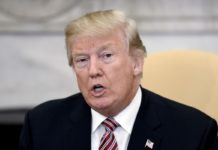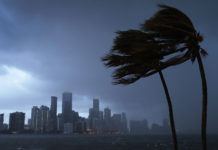Now that US Federal Reserve chief Janet Yellen has made it clear she’s looking out for “some” improvement in the job market before voting for the first Fed interest rate rise in nearly a decade, so is everyone else. The challenge is that the US economy is generating very little inflation — not to mention disinflation coming from China and nearly no inflation in Europe — leaving many questioning whether the Fed even should be considering a rate rise. The US economy only grew by 1.5 per cent in the first half of the year, slower than the average 2 per cent pace over the previous three years and less than half the speed of past boom times in 2004 – 2005. Yet the unemployment rate continues to fall, with first time claims for jobless benefits near a 40-year low. That, say some economists, is a cause for concern given rates are still at zero and would normally be much higher at this stage. “The pace for growth remains extremely weak by past recovery standards, but with potential growth weaker as well it appears to be more than sufficient to keep the unemployment rate coming down,” notes Jim O’Sullivan, chief US economist at High Frequency Economics in Valhalla, New York. If the potential growth rate is much lower, then spare capacity in the economy may be close to nil, which means that not only is the business cycle at a mature stage, interest rates may have to move up more quickly than most currently expect. But there are different warning signs, too, not least the strong dollar, which has been keeping down the price of imported goods and has hurt US businesses trying to sell their goods and services abroad by making them more expensive. The latest gross domestic product data also showed a sizeable buildup of inventories in the first half of the year, which at some point will need to be drawn down, likely slowing production in the process, and with it, economic growth. Next Friday’s jobs data is expected to show the US economy created 225,000 new jobs in July, just a tad more than in June, what was deemed a fairly disappointing report, according to economists polled by Reuters. The unemployment rate is expected to hold steady at 5.3 per cent. Better figures, sustained in August, might just be enough to meet Yellen’s “some” improvement tag. For a Federal Open Market Committee that appears pre-disposed to get on with a much-awaited first rate rise, the bar does seem to be set fairly low. “Keep an eye on the pay growth numbers too, for a possible edging up, after the slippage seen in June,” warned Victoria Clarke, economist at Investec. “This would certainly do no harm for Fed lift-off prospects for the September FOMC.” Employment costs data for the second quarter implied there still has been no acceleration in pay, with a sudden slowing canceling out a stronger set of figures in January-March. One thing is certain: once the Fed does begin hiking, the expected path of future rates and what that does to the dollar may have major repercussions for the world economy. That becomes especially evident given that the big emerging market growth engines are running at half throttle at best, or in the case of Brazil, once Latin America’s darling, crashing into recession. Many of their currencies are in full retreat.
Latest article
Al Molla inspects the Suez Methanol Derivatives Plant in Damietta
Minister of Petroleum and Mineral Resources Tarek Al Molla has inspected the construction work of the Suez Methanol Derivatives Plant in Damietta...
Petroleum Marine Services Company (PMS) Profits increase 28% in 2023
Minister of Petroleum and Mineral Resources, Eng. Tarek El Molla has attended remotely the general assembly of Petroleum Marine Services Company (PMS) which...
Misr Maintenance Company achieves EGP 8.8 bn revenues
The General Assembly of the Misr Maintenance Company was held on Sunday, March 31, where the results of the company’s work for...












